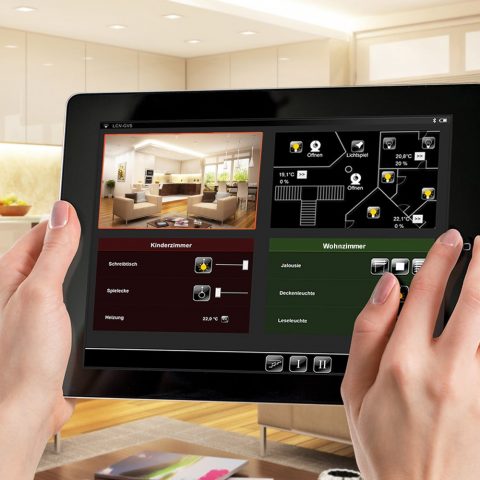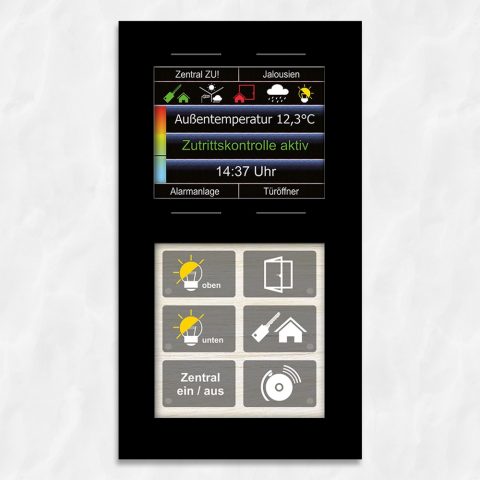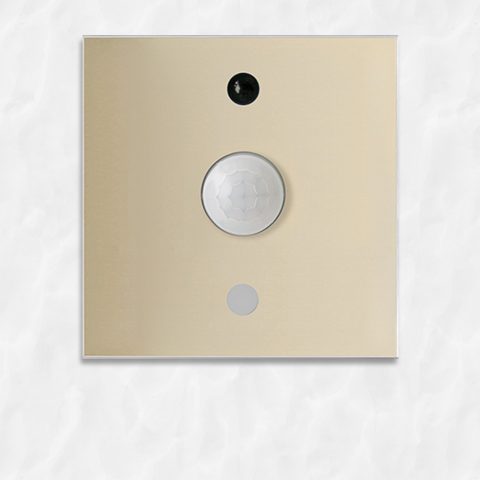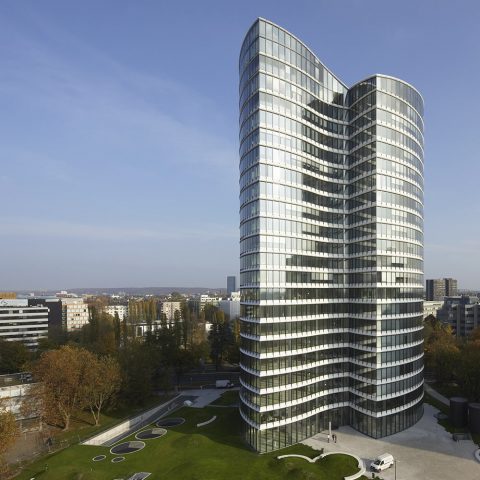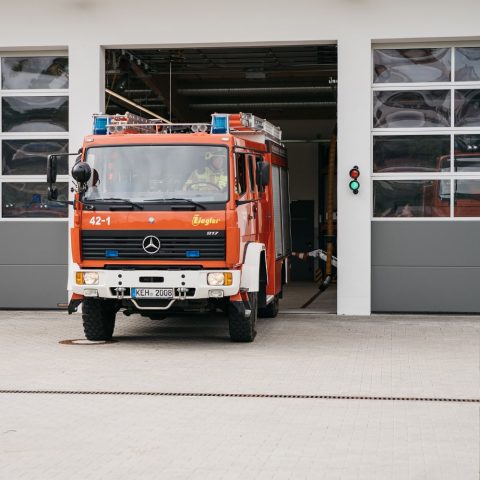Planning the Local Control Network is this easy
With LCN, practically all functions of a building can be automated. The flexibly expandable LCN system makes it possible to link manual commands with automatic functions. In this way, a property can not only be controlled and regulated across all trades, but also offers the user – almost incidentally – maximum individual comfort and financial savings thanks to energy-efficient consumption optimization.

LCN bus system
The LCN bus system
Thanks to their own “intelligence”, LCN modules can independently send and receive commands, evaluate sensors, control actuators and regulate data exchange among themselves. A central computer is not required.
Installation
A standard NYM cable is laid with an additional core, e.g. 4 x 1.5 mm². A five-core cable is shown in the picture, as it is in commercial use. An extra line network is not required for the LCN bus. The data wire is treated as a mains wire and may therefore be routed together with the 230 V installation in accordance with VDE. The LCN modules do not require additional power supplies. They are connected directly to the laid mains voltage cable.

Segments
Planning LCN installations is particularly easy because LCN imposes very few regulations: the only thing to consider is the maximum number of modules in the lowest level, namely 250. For large installations, a maximum of 250 modules each form a segment. Up to 120 such segments can be directly coupled for 30,000 modules in maximum expansion. However, rarely more than 250 modules and thus several segments are necessary. Because, depending on the requirements of the building owner, 100 to 500 rooms can be controlled with only 250 modules.

LCN-Bus
For a particularly compact installation, an LCN-R6H relay block can be plugged into the LCN-SH top-hat rail module, for example. This results in eight outputs and additionally the possibility to connect eight keys, at only one bus participant!


Communication between the modules
In order for each LCN module to be addressable, it needs an address. This is a number between 5 and 254, and is assigned by LCN-PRO. A data telegram can be sent to this address from any point in the overall bus. If several stations are to be addressed with one telegram, this is done via group addressing. Per LCN bus segment, 250 group numbers in the range of 5 to 254 can be freely assigned. The number of members per group is unlimited. Each module can be a member of up to 12 groups. In the LCN system, groups are only formed if several consumers are actually to be addressed simultaneously. With a point-to-point transmission, on the other hand, addressing is direct (“to module 55: GF WC light”), as one would intuitively expect.
In addition to descriptiveness, there is another important reason for direct addressing.
Modules can send information directly to each other for further processing, thus forming a “neural” network that becomes increasingly intelligent and powerful as the number of modules increases. This is important for future automation tasks.
Especially important for practice:
LCN always offers several solutions for the same task, depending on the size of the object and the budget of the client. With an inexpensive variant, a thrifty builder can be won over to bus technology, and with a luxury variant, even the most demanding builder can be won over.
LCN works well with conventional installation technology. It gives builders the freedom to have LCN installed as needed up to full build-out.

Planning examples
In one room, the lighting is to be controlled via two individually controllable lighting circuits. Programmable light scenes as well as the dimming levels of the respective (dimmable) illuminants can be determined in the programming. The operation (in the example) is realized via the LCN-GT6. In addition, the LCN-GT4D display switch (supply via the LCN-NUI power supply unit) could be installed to control the heating or other consumers.

The temperature within a room should be manually preselected and automatically maintained. For this purpose, the existing actual values are permanently compared with the specified target values. This is controlled by the temperature sensor integrated in the LCN-GT4D. In this way, deviations can be regulated at any time via the eight individually controllable relays of the LCN-R8H at the corresponding valves.

Several electric shutters are to be automated to shade a room/ building. With the motor relay block LCN-R4M2H, 4 x 2 motor pairs can be directly addressed and controlled. In this way, individual zones or an entire object can be shaded at the touch of a button. The LCN-GT4D display switch is integrated to provide a central, visual status report on the current status.

The LCN-GT2T transponder reader is integrated into the bus to control and monitor an entrance area. Up to 16 transponders can be evaluated directly in the LCN-UPP module. The doors are opened via a relay circuit on the electric door opener. The LCN-GVS is available for higher requirements such as person recognition, recording or for time-of-day-dependent access.

The temperature within a room should be manually preselected and automatically maintained only when the room is in use. When the window is open, the radiator must be switched off automatically and after closing the window it must heat up again to the preselected room temperature. If no one is in the room for a longer period of time, the temperature should be automatically lowered to a low maintenance value.
All functions must also be manually accessible. For the implementation, only a decentrally installed bus module is required (here: UPP), to which all sensors, the actuator for the heating valve and the pushbuttons required for manual operation are connected. Various temperatures can be preselected via the LCN sensor keypad. The current room temperature is then shown on the display or in the form of a bar graph. Alternatively, EIB/KNX, EnOcean or conventional pushbuttons can be used for operation.

A transponder system is to be used to unlock a door and thus grant access to the building. The door area is automatically illuminated by presence detectors when approached. To enable protection against misuse of the open door, a door contact is installed. If the door remains open for a certain period of time, a security service can be informed, for example, by help of the LCN-GVS visualization system. The LCN transponder systems enable the use of LCN transponders and/or transponders from various manufacturers, including car keys.
The LCN-GVS can be used to remotely control the entire LCN system using browser-enabled operating devices (smartphones, tablet PC, notebook, etc.), for example, to control and monitor the entrance door in this case. In addition, the LCN-GVS system offers the possibility of sending SMS messages via the Internet or using a GSM modem via the LCN-GVS system. When using the LCN-GVS APP, any number of employees receive important information as a push message directly to their smartphone. In addition, the LCN-GVS system offers the possibility of sending SMS messages via the Internet or using a GSM modem via the LCN-GVS system. When using the LCN-GVS APP, any number of employees receive important information as a push message directly to their smartphone.



With LCN, projects can be easily realized:
Few modules necessary thanks to combination
Only a few planning rules to follow
Clear bus topology
Easy to maintain by the electrician
Great freedom in the controls
Expandable to up to 30,000 modules
No data loss in large systems
Real feedback on commands
Price customizable within wide limits
Very high intelligence and functionality
Visit an LCN training course!
You are convinced of LCN, then attend an LCN intensive course. This allows you to get to know LCN better and participate in a 1-day training course. Or order the LCN-SKO sample and training case.
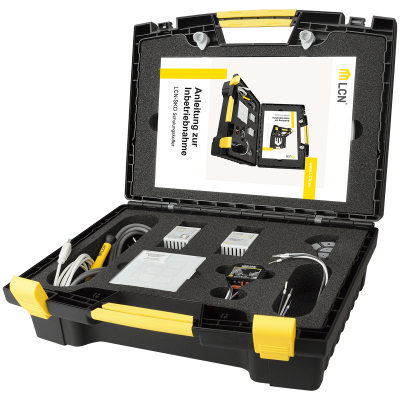
LCN projects
Ask us about the installation of LCN!
Call us! Our experts are there for you! Phone number: 05066 99 88 55

